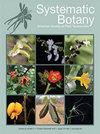Insights into Species Delimitation of Selected Species in the Flowering Plant Genus Medicago Section Buceras (Leguminosae)
IF 0.8
3区 生物学
Q4 EVOLUTIONARY BIOLOGY
引用次数: 1
Abstract
Abstract The genus Medicago (Leguminosae, Papilionoideae) contains about 90 species including the important forage crop alfalfa Medicago sativa and the genomic model Medicago truncatula. Despite intensive research on the genus because of its agricultural importance, there is a relative lack of information about chromosome number and genome size in some Medicago species, especially those from Medicago section Buceras that were formerly placed in the sister genus Trigonella, and are paraphyletic to the remainder of the genus Medicago. Past studies revealed that previous species delimitations did not conform well with complex patterns of morphological or genetic variation. Some published chromosome numbers, e.g. 2n = 28 and 2n = 44, differ from those of the rest of the genus, which are mostly 2n = 16 or polyploids thereof, although some cases of aneuploid reduction or dysploidy (e.g. 2n = 14) do exist. Here we estimated phylogenetic relationships of 42 accessions corresponding to 14 currently recognized Medicago species that are paraphyletic to the remainder of Medicago with a focus on Medicago monantha; for a number of those accessions we obtained estimates of genome size (39) and chromosome number (14). We can confirm the delimitation of two species within M. section Buceras and our data suggest that there are at least two entities with distinct geographic distributions within the currently recognized species M. monantha, which differ in chromosome number and genome size. Our data also suggest that polyploidy and post-polyploid descending dysploidy played a significant role in genome evolution within M. section Buceras. Our data provide a strong foundation for whole-genome sequencing projects and further in-depth research of these paraphyletic lineages.开花植物紫花苜蓿科紫花苜蓿(豆科)选种划分的认识
摘要紫花苜蓿属(豆科,凤蝶科)包括重要的饲料作物紫花苜蓿(Medicago sativa)和基因组模型紫花苜蓿(Medicago truncatula)在内约90种。尽管由于其在农业上的重要性而对该属进行了深入的研究,但在一些紫花苜蓿物种中,关于染色体数目和基因组大小的信息相对缺乏,特别是那些以前被放置在姐妹属Trigonella中的紫花苜蓿部分,并且与紫花苜蓿属的其余部分是副葡萄的。过去的研究表明,以前的物种划分不符合复杂的形态或遗传变异模式。一些已发表的染色体数目,例如2n = 28和2n = 44,与该属的其他染色体数目不同,它们大多是2n = 16或多倍体,尽管确实存在一些非整倍体减少或异常倍体的情况(例如2n = 14)。本文对目前已知的14种紫花苜蓿属的42份材料的系统发育关系进行了估计,其中以紫花苜蓿为重点;对于这些资料,我们获得了基因组大小(39)和染色体数目(14)的估计值。我们可以确认M. section Buceras中的两个物种的划分,我们的数据表明,在目前已知的种M. monantha中至少存在两个具有不同地理分布的实体,它们在染色体数目和基因组大小上存在差异。我们的数据还表明,多倍体和后多倍体下降异倍体在M. section Buceras的基因组进化中发挥了重要作用。我们的数据为全基因组测序项目和进一步深入研究这些副葡萄谱系提供了坚实的基础。
本文章由计算机程序翻译,如有差异,请以英文原文为准。
求助全文
约1分钟内获得全文
求助全文
来源期刊

Systematic Botany
生物-进化生物学
CiteScore
1.80
自引率
10.00%
发文量
72
审稿时长
6-12 weeks
期刊介绍:
Systematic Botany Monographs is a series of peer-reviewed taxonomic monographs and revisions published the American Society of Plant Taxonomists. ISSN 0737-8211, ISBN prefix 978-0-912861. No; volumes of Systematic Botany Monographs must be ordered separately. ASPT membership inludes only a subscription to the quarterly journal Systematic Botany. SBM is supported by sales, author"s subsidies, and donations.
 求助内容:
求助内容: 应助结果提醒方式:
应助结果提醒方式:


